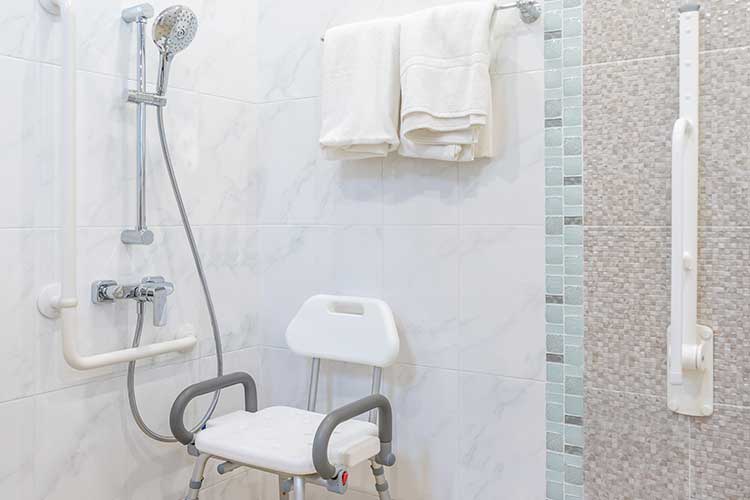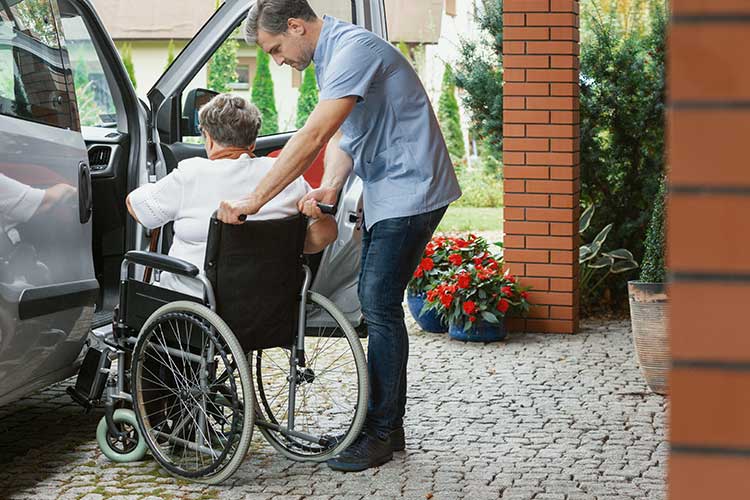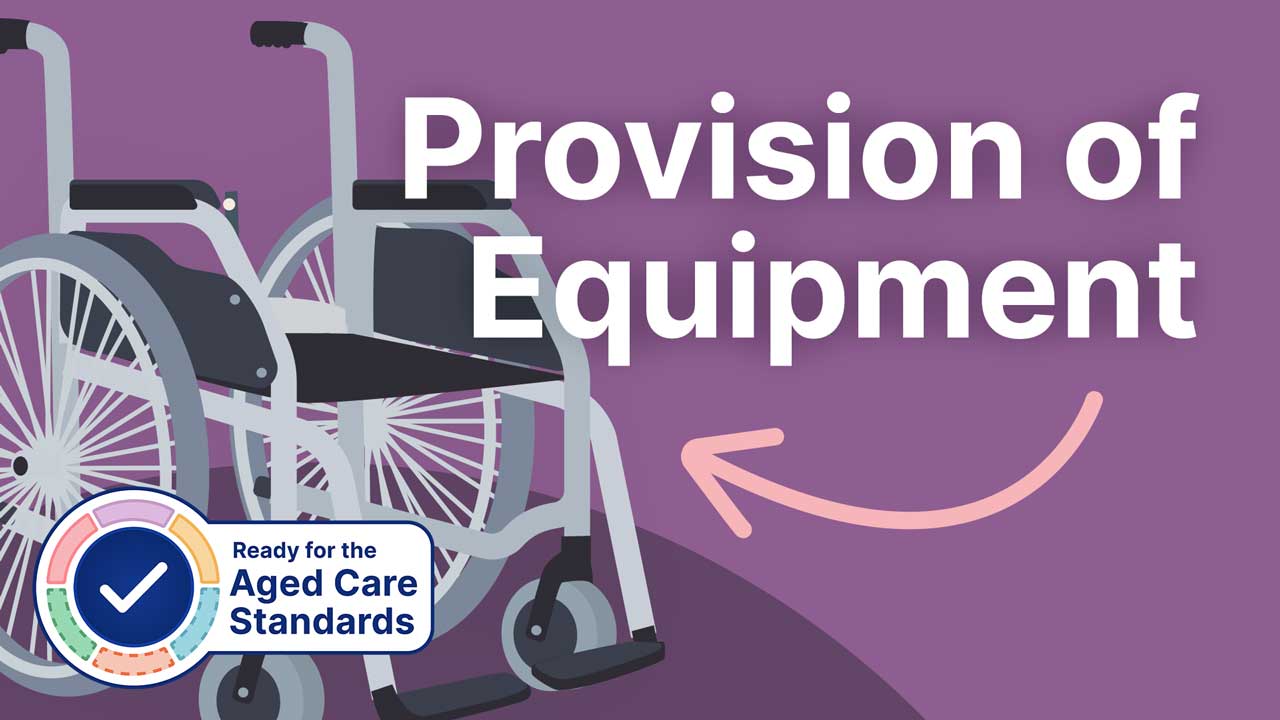In some cases, aged care organisations might supply their care recipients with equipment and aids to use outside of the service environment, for example, within the older person’s own home if they are receiving a Home Care Package (ACQSC 2023).
Any equipment or aids provided by the organisation must be fit for purpose; that is, safe, suitable, clean and well-maintained (ACQSC 2023).
For example, if providing a handrail for an older person, the organisation would be responsible for choosing a high-quality, sturdy handrail and ensuring it’s installed correctly (CDCS 2019).
Any third-party services subcontracted by the organisation must also use equipment and aids that are deemed fit for purpose. It’s the organisation’s responsibility to ensure that subcontracted services are using appropriate equipment and aids (ACQSC 2023).
Furthermore, the organisation is also responsible for assessing any equipment or aids owned by the care recipient themself that are required in the delivery of supports and services. For example, if a staff member notices a crack in an older person’s shower chair, they would need to raise this concern (ACQSC 2023; CDCS 2019).
Provision of Equipment Under the Strengthened Aged Care Quality Standards
Standard 4: The Environment - Outcome 4.1a: Environment and equipment at home under the strengthened Aged Care Quality Standards (Action 4.1.2a) requires that equipment and aids provided to older people are safe, clean, well-maintained and appropriate for their needs (ACQSC 2024a).
Additionally, Standard 5: Clinical Care - Outcome 5.4: Comprehensive care (Action 5.4.2) expects that aged care providers identify and provide any equipment, aids, devices and products required by an older person as part of comprehensive clinical assessments (ACQSC 2024b).

The Needs and Preferences of Older People
Each older person has their own equipment needs and preferences based on their:
- Care
- Lifestyle
- Mobility
- Communication
- Housekeeping
- Goals.
(ACQSC 2023)
Types of Equipment and Aids
The term ‘equipment’ is broad, comprising:
- Routine and specialised care equipment
- Equipment used for the older person’s lifestyle
- Housekeeping and cleaning equipment
- Gardening equipment
- Transport
- Maintenance.
(ACQSC 2023)
Examples include:
- Mobility aids such as wheelchairs and walking frames
- Mechanical devices for getting in and out of bed
- Bed rails
- Bedding aids such as slide sheets, sheepskins, tri-pillows and pressure-relieving mattresses
- Shower chairs and hoists
- Ramps for walking and wheelchair access
- Continence aids such as bedpans and pads
- Splints and braces
- Home oxygen services
- Home or vehicle modifications.
(My Aged Care 2021; Better Health Channel 2023)

Ensuring Equipment and Aids are Fit for Purpose
In order to ensure equipment and aids are safe, suitable, clean and well-maintained, organisations should:
- Train staff to safely clean equipment
- Ensure staff can identify any potential risks when using equipment
- Plan and perform maintenance and cleaning routines for equipment
- Have an appropriate process in place for purchasing, servicing, maintaining, renewing and replacing equipment
- Perform risk assessments before providing equipment to older people
- Use, store and maintain equipment according to manufacturer guidelines
- Use equipment for its intended purpose only
- Ensure that the equipment is only being used by the care recipient it was given to
- Ensure that subcontractors’ equipment meets all requirements
- When equipment is shared between the organisation, the care recipient and/or a third party, ensure the clear responsibilities of each party are documented.
(ACQSC 2023)
Test Your Knowledge
Question 1 of 3
Who is responsible for ensuring that equipment provided by subcontracted third parties is fit for purpose?
Topics
Further your knowledge
References
- Aged Care Quality and Safety Commission 2024a, Standard 4: The Environment, Australian Government, viewed 15 May 2024, https://www.health.gov.au/resources/publications/strengthened-aged-care-quality-standards-august-2025?language=en/environment
- Aged Care Quality and Safety Commission 2024b, Standard 5: Clinical Care, Australian Government, viewed 15 May 2024, https://www.health.gov.au/resources/publications/strengthened-aged-care-quality-standards-august-2025?language=en
- Aged Care Quality and Safety Commission 2023, Guidance and Resources for Providers to Support the Aged Care Quality Standards, Australian Government, viewed 15 May 2024, https://www.agedcarequality.gov.au/sites/default/files/media/Guidance_%26_Resource_V14.pdf
- Better Health Channel 2023, Aids and Equipment at Home, Victoria State Government, viewed 15 May 2024, https://www.betterhealth.vic.gov.au/health/servicesandsupport/aids-and-equipment-at-home
- Donna 2019, ‘ ‘Help Me Get My Feet Back on the Ground’ – Services & Supports for Daily Living|New Aged Care Standard #4’, Culturally Directed Care Solutions, 22 March, viewed 15 May 2024, https://cdcs.com.au/standard-four-new-aged-care-standards/
- My Aged Care 2021, Aids to Stay Independent, My Aged Care, Australian Government, viewed 15 May 2024, https://www.myagedcare.gov.au/aged-care-services/aids-to-stay-independent
 New
New 

